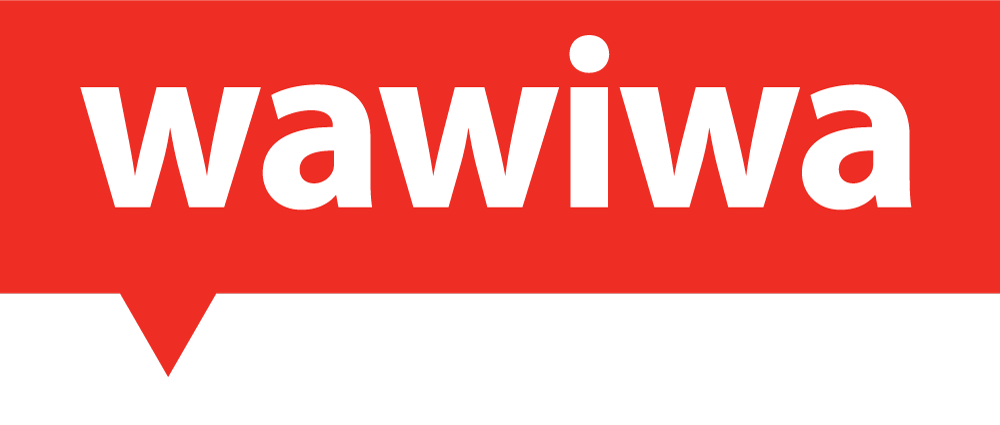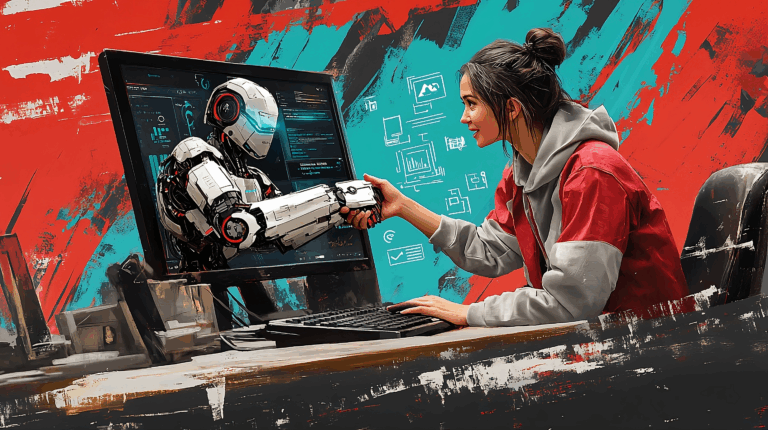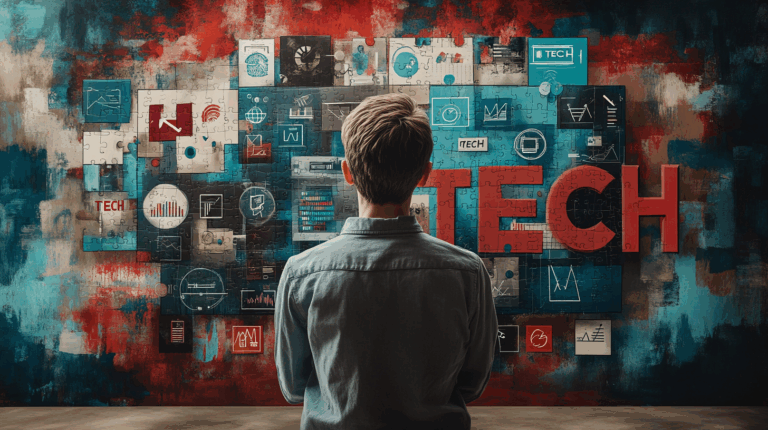AI might not steal your job as a graphic designer, but someone using AI might. Digital Graphic Designers are facing a revolution driven by Artificial Intelligence. We sat down with Ynon Oren, Wawiwa’s head of the Digital Graphic Designer Program, to discuss what digital graphic design is and how one can become a graphic designer. Ynon uncovers the surprising ways AI is reshaping creativity, streamlining workflows, and redefining what it means to be a designer today. Want to know what skills will keep you employable and indispensable in this AI era? Keep reading.
Despite coming from a different academic background, Ynon discovered his passion for design later in his career. He emphasizes that what truly matters in the graphic design field is the thought process, passion, and commitment to lifelong learning – constantly honing skills to stay relevant in the AI era.
Ver la grabación de la entrevista
Meet Ynon Oren, Wawiwa’s head of the Digital Graphic Designer Program
Q. Hi Ynon, to start off, tell us about yourself and your experience.
Ynon: Well, I haven’t yet decided what I want to do when I grow up, so professionally, I’m a bit of a Jack of all Trades. As a kid, I loved art, cinema, computers, and gaming, which led me to study film at Tel Aviv University. After film school, I specialized in Visual effects (VFX) and animation, working in promo departments of major TV channels and production companies as an editor, VFX artist, and animator. That’s where I discovered my passion for graphic design and started learning from top professionals on the job. Later, I opened my own studio focusing on branding, web, and print design, and eventually found my true passion in teaching. Today, I teach visual communication, UX, and game development, and consult for design, tech, and gaming companies to upskill their teams and optimize production pipelines.”
What is Digital Graphic Design?
Q. What is Digital Graphic Design? What characterizes the people who are good in this field?
Ynon: “It’s a big question, almost philosophical. At its core, graphic design and digital graphic design are the same: both use visual imagery to convey a message. I like to compare it to art – both rely on visual aesthetics to communicate with the viewer. The difference is in how we judge them: in art, the message can be interpreted differently by each viewer, and that’s completely fine. In graphic design, however, we want all viewers to understand the same message – usually ‘buy this product,’ ‘use this service,’ or ‘embrace this idea.’ A good graphic designer understands that the job isn’t just about making things look pretty or knowing Photoshop and Illustrator by heart. It’s about making the right design decisions to ensure the message reaches the right audience. That requires understanding visual communication principles and researching the brand, product, audience, and market.”
What’s the difference between graphic design and UX/UI?
Q. A lot of people confuse graphic design with UX/UI. What is the difference between the two?
Ynon: “UX/UI and graphic design are overlapping fields, but each has its own distinct focus. What they share is a strong emphasis on visual aesthetics – layout, typography, color theory, and visual hierarchy – as well as brand consistency and user engagement. Both aim to capture attention and guide the viewer’s eye, whether it’s through a poster or an app interface. The main difference lies in their purpose: graphic design focuses on static visuals such as posters, ads, or packaging to communicate a clear message, while UX/UI design is about creating interactive systems like websites and apps that enhance usability and the overall user experience. Graphic Designers often use tools such as Photoshop, Illustrator, and InDesign, whereas UX/UI Designers rely on Figma, Sketch, or Adobe XD, combining creativity with user research, testing, and prototyping.”
How is AI changing digital graphic design?
Q. How has Generative AI changed the work of Graphic Designers and the tasks performed in the job?
Ynon: “Generative AI has dramatically reshaped the work of Graphic Designers, changing both the creative process and the day-to-day tasks. AI was part of the process for many years already – it handled small, routine tasks like cleaning backgrounds or identifying fonts, which once took days to do manually. Today, AI can resize hundreds of images or adjust layouts in seconds, allowing designers to focus on creativity and strategy rather than repetitive technical work. Software like Photoshop now integrates AI directly, making it more intuitive and faster than ever. Beyond automation, AI has become a creative partner – generating ideas, color palettes, and quick sketches that help designers visualize and iterate faster. However, design is still 90% mental and 10% technical. The critical thinking, research, and contextual understanding behind design can’t be automated. AI doesn’t have common sense or life experience, so it always needs human oversight and a personal touch. AI might handle about 10%-15% of the work, while human creativity, empathy, and judgment remain essential to producing meaningful, high-quality designs.”
Q. Do you see AI as a threat?
Ynon: “I don’t see AI as a threat to be honest – it’s a transformative force. Like Uber disrupted the taxi industry, AI is disrupting design, but it doesn’t eliminate it. The core of a designer’s work remains the same: making informed, conscious decisions that convey a clear message. AI can automate routine tasks and generate visuals, but it still lacks life experience, common sense, and context. I’ve never gotten it right on the first try. I always have to tweak, adjust, and add the human touch. AI replaces the more technical, junior-level tasks – the equivalent of production assistants – but not the role of the art director or strategic thinker. The best designers have always been those who understand communication, research deeply, and can read clients’ reactions – something AI simply can’t do. AI can’t read the room. It doesn’t know when a client hesitates or loves an idea. That’s still entirely human.”
What are the AI graphic design tools that you should know?
Q. Which AI tools for graphic design are your favorites and why?
Ynon: “When it comes to AI tools for graphic design, it really depends on the task. I use Adobe Firefly and the built-in AI tools within Photoshop y Ilustrador a lot. Beyond the creative tools, I rely heavily on ChatGPT, Claude, Copiloty Gemini for research and idea development. I use them to learn about the client, the product, and the market before I even start designing. I also experiment with newer AI tools like Nano Banana, Google’s generative image platform, and a new Illustrator feature in beta – Turntable, which can generate multiple camera angles from a single character drawing. Funny enough, my favorite AI tool isn’t even a design one – it’s Copiloto GitHub. It keeps perfect context when writing code, unlike most AIs that lose track mid-conversation. It’s the closest thing I’ve found to working in a straight, consistent line.”
How do I become a Graphic Designer?
Q. Can anyone become a Digital Graphic Designer?
Ynon: “Technically, anyone can become a Digital Graphic Designer, but the real question is – should everyone? The people who truly thrive in this field are those who genuinely enjoy working with visuals and have a deep appreciation for aesthetics. It’s not just about drawing, it’s about the thought process behind every design decision. While anyone can study graphic design and learn the necessary tools, becoming a good designer requires passion and persistence. Talent helps, of course, but skills can be developed. What matters most is whether you enjoy the process – that’s what keeps you growing and improving as a designer.”
Q. You’re the Head of Wawiwa’s Digital Graphic Design Program. Tell us about the program.
Ynon: “The Digital Graphic Designer Program at Wawiwa is built on my own professional journey – the lessons I wish I’d known when starting out. Learning on the job is effective but tough. It took me years of trial, stress, and real client work to gain the experience I needed. The program is designed to shorten that learning curve and focus on employability, teaching students exactly what employers value most today. It combines traditional design principles with the latest AI tools, ensuring students become proficient in both creative thinking and technical skills. Good design isn’t just art, it’s psychology, even neurology. It’s about understanding how people perceive and process messages. Throughout the program, students work on hands-on projects that simulate real-world scenarios, building complete brand identities – from research and concept to sketches, iterations, and final designs. These projects become part of their portfolio, helping graduates showcase relevant, in-demand skills and impress potential employers.”
Q. Any final words? What would you recommend to a potential student considering going for graphic design?
Ynon: “Go for it! But be ready to be a lifelong learner. The world of design is constantly evolving – technology changes, trends shift, and new tools emerge every day. To stay relevant, you have to keep learning, and refining your craft. Graphic design is a journey of continuous growth. The more curious and open you are to learning, the better designer you’ll become.”



